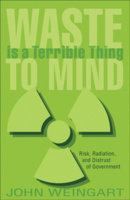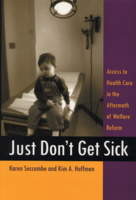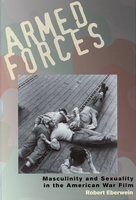Conversion of a Continent
Contemporary Religious Change in Latin America
The Practice of U.S. Women's History
Narratives, Intersections, and Dialogues
In this collection of seventeen original essays on women’s lives from the colonial period to the present, contributors take the competing forces of race, gender, class, sexuality, religion, and region into account. Among many other examples, they examine how conceptions of gender shaped government officials’ attitudes towards East Asian immigrants; how race and gender inequality pervaded the welfare state; and how color and class shaped Mexican American women’s mobilization for civil and labor rights.
Rutgers Football
A Gridiron Tradition in Scarlet
You Shall Tell Your Children
Holocaust Memory in American Passover Ritual
Utopia, New Jersey
Travels in the Nearest Eden
Hindu Primary Sources
A Sectarian Reader
Notorious New Jersey
100 True Tales of Murders and Mobsters, Scandals and Scoundrels
Genetic Witness
Science, Law, and Controversy in the Making of DNA Profiling
Yet, this promise took ten turbulent years to be fulfilled. In Genetic Witness, Jay D. Aronson uncovers the dramatic early history of DNA profiling that has been obscured by the technique’s recent success.
Tuberculosis and the Politics of Exclusion
A History of Public Health and Migration to Los Angeles
Abel’s revealing account provides a critical lens through which to view both the contemporary debate about immigration and the U.S. response to the emergent global tuberculosis epidemic.
Hemispheric American Studies
The Many Colors of Hinduism
A Thematic-Historical Introduction
The Many Colors of Hinduism is the first introductory text to provide a balanced view of this rich religious tradition, acknowledging the full range of its many competing and even contradictory aspects. Utilizing a thematic-historical approach, Carl Olson draws on a wide array of textual evidence, the fieldwork of anthropologists in close contact with insiders, and voices of thinkers ranging from Indologist Alf Hiltebeitel to Cambridge scholar Julius Lipner. The result is a narrative approach that offers a view of Hinduism that emulates the storytelling nature of the religion itself.
Not in Front of the Children
'Indecency,' Censorship, and the Innocence of Youth
Money Jungle
Imagining the New Times Square
Big Prisons, Big Dreams
Crime and the Failure of America's Penal System
Breeding Contempt
The History of Coerced Sterilization in the United States
Waste is a Terrible Thing to Mind
Risk, Radiation, and Distrust of Government
The Naked Truth
Why Hollywood Doesn't Make X-rated Movies
Just Don't Get Sick
Access to Health Care in the Aftermath of Welfare Reform
With the Weathermen
The Personal Journal of a Revolutionary Woman
The Weathermen--a U.S.-based, revolutionary splinter group of Students for a Democratic Society--advocated the overthrow of the government and capitalism, and toward that end, carried out a campaign of bombings, jailbreaks, and riots throughout the United States. In With the Weathermen Stern traces her involvement with this group, and her transformation from a shy, married graduate student into a go-go dancing, street-fighting "macho mama." In vivid and emotional language, she describes the attractions and difficulties of joining a collective radical group and in maintaining a position within it.
Stern's memoir offers a rich description of the raw and rough social dynamics of this community, from its strict demands to "smash monogamy," to its sometimes enforced orgies, and to the demeaning character assassination that was led by the group's top members. She provides a distinctly personal and female perspective on the destructive social functionality and frequently contradictory attitudes toward gender roles and women's rights within the New Left.
Laura Browder's masterful introduction situates Stern's memoir in its historical context, examines the circumstances of its writing and publication, and describes the book's somewhat controversial reception by the public and critics alike.
Growing Girls
The Natural Origins of Girls' Organizations in America
Susan A. Miller explores these girls' organizations that sprung up in the first half of the twentieth century from a socio-historical perspective, showing how the notions of uniform identity, civic duty, "primitive domesticity," and fitness shaped the formation of the modern girl.
Empire and The Literature of Sensation
An Anthology of Nineteenth-Century Popular Fiction
I Call to Remembrance
Toyo Suyemoto's Years of Internment
Sacred Assemblies and Civic Engagement
How Religion Matters for America's Newest Immigrants
Sacred Assemblies and Civic Engagement takes an in-depth look at one particular urban area—the Chicago metropolitan region—and examines how religion affects the civic engagement of the nation’s newest residents.
Film Talk
Directors at Work
A medley of directors including those working in pop culture and documentary, as well as feminist filmmakers, social satirists, and Hollywood mavericks recount stories that have never before been published. Among them are Monte Hellman, the auteur of the minimalist masterpiece Two-Lane Blacktop; Albert Maysles, who with his late brother David, created some of the most important documentaries of the 1960s, including Salesman and The Beatles: What's Happening?; Robert Downey Sr., whose social satires Putney Swope and Greaser's Palace paved the way for a generation of filmmakers; Bennett Miller, whose film Capote won an Academy Award in 2005; and Jamie Babbit, a lesbian crossover director whose low-budget film But I'm a Cheerleader! became a mainstream hit.
The Best-Kept Secret
Women Corporate Lobbyists, Policy, and Power in the United States
Japanese and Chinese Immigrant Activists
Organizing in American and International Communist Movements, 1919–1933
Beyond Terror
Gender, Narrative, Human Rights
American Cinema of the 1930s
Themes and Variations
A Place at the Multicultural Table
The Development of an American Hinduism
In A Place at the Multicultural Table, Prema A. Kurien shows how various Hindu American organizations--religious, cultural, and political--are attempting to answer the puzzling questions of identity outside their homeland. Drawing on the experiences of both immigrant and American-born Hindu Americans, Kurien demonstrates how religious ideas and practices are being imported, exported, and reshaped in the process. The result of this transnational movement is an American Hinduism--an organized, politicized, and standardized version of that which is found in India.
Transcultural Bodies
Female Genital Cutting in Global Context
Bringing together thirteen essays, Transcultural Bodies provides an ethnographically rich exploration of FGC among African diasporas in the United Kingdom, Europe, and Australia. Contributors analyze changes in ideologies of gender and sexuality in immigrant communities, the frequent marginalization of African women's voices in debates over FGC, and controversies over legislation restricting the practice in immigrant populations.
Armed Forces
Masculinity and Sexuality in the American War Film
Teenage Witches
Magical Youth and the Search for the Self
A popular new image of Witches has arisen in recent years, due largely to movies like The Craft, Practical Magic, and Simply Irresistible and television shows such as Buffy the Vampire Slayer, Sabrina the Teenage Witch, and Charmed. Here, young sexy Witches use magic and Witchcraft to gain control over their lives and fight evil. Yet, as Helen A. Berger and Douglas Ezzy show in this in-depth look into the lives of teenage Witches, the reality of their practices, beliefs, values, and motivations is very different from the sensational depictions we see in popular culture.
The authors trace the development of Neo-Paganism (an umbrella term used to distinguish earth-based religions from the pagan religions of ancient cultures) from its start in England during the 1940s, through its growing popularity in the decades that followed, up through its contemporary presence on the Internet. Though dispersed and disorganized, Neo-Pagan communities, virtual and real, are shown to be an important part of religious identity particularly for those seeking affirmation during the difficult years between childhood and adulthood.
City That Never Sleeps
New York and the Filmic Imagination
Surgery Junkies
Wellness and Pathology in Cosmetic Culture
American Cinema of the 1980s
Themes and Variations
This Was New Jersey As Seen by Photographer Harry C. Dorer
Harry C. Dorer roamed New Jersey for four decades from 1920 until 1954 with his boxy Speed Graphic camera, capturing for a weekly newspaper the images of what is now a vanished landscape. From the state's cities and villages to its rural areas to the then-mysterious Pine Barrens and the fishing fleets at the Jersey Shore, Dorer amassed hundreds of images that revealed the region's rapidly changing countryside, customs, and social dynamics. Bringing together more than 300 of Dorer's photographs, this stunning collection is no ordinary look at New Jersey's past. Dorer's always incisive eye provides a visual record of the state's history that is unsettling, shocking, enchanting, and endearing.
A People's History of the European Court of Human Rights
Michael Goldhaber introduces American audiences to the judicial arm of the Council of Europe—a group distinct from the European Union, and much larger—whose mission is centered on interpreting the European Convention on Human Rights. The Council routinely confronts nations over their most culturally-sensitive, hot-button issues. It has stared down France on the issue of Muslim immigration; Ireland on abortion; Greece on Greek Orthodoxy; Turkey on Kurdish separatism; Austria on Nazism; and Britain on gay rights and corporal punishment. And what is most extraordinary is that nations commonly comply.
In the battle for the world’s conscience, Goldhaber shows how the court in Strasbourg may be pulling ahead.
Cottages and Mansions of the Jersey Shore
Body Evidence
Intimate Violence against South Asian Women in America
The Two Lives of Sally Miller
A Case of Mistaken Racial Identity in Antebellum New Orleans
In The Two Lives of Sally Miller, Carol Wilson explores this fascinating legal case and its reflection on broader questions about race, society, and law in the antebellum South. Why did a court system known for its extreme bias against African Americans help to free a woman who was believed by many to be a black slave? Wilson explains that while the notion of white enslavement was shocking, it was easier for society to acknowledge that possibility than the alternative-an African slave who deceived whites and triumphed over the system.








































